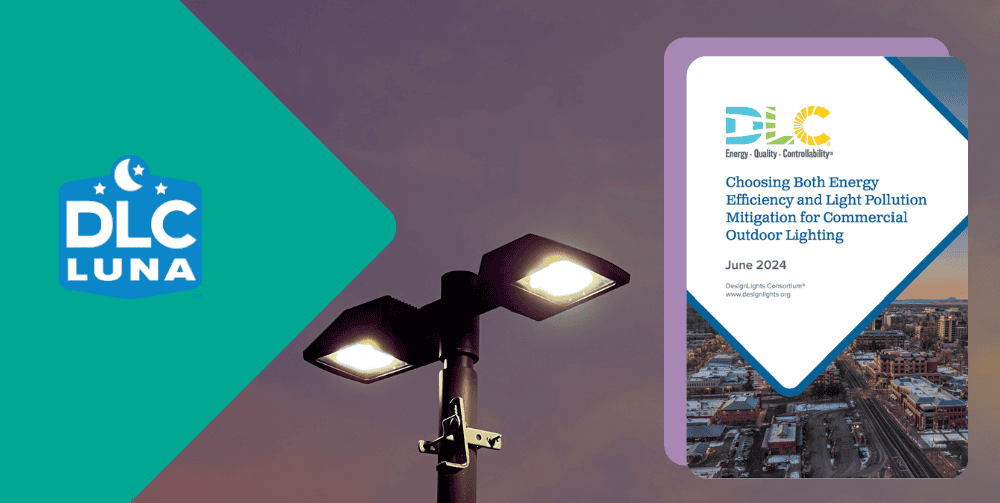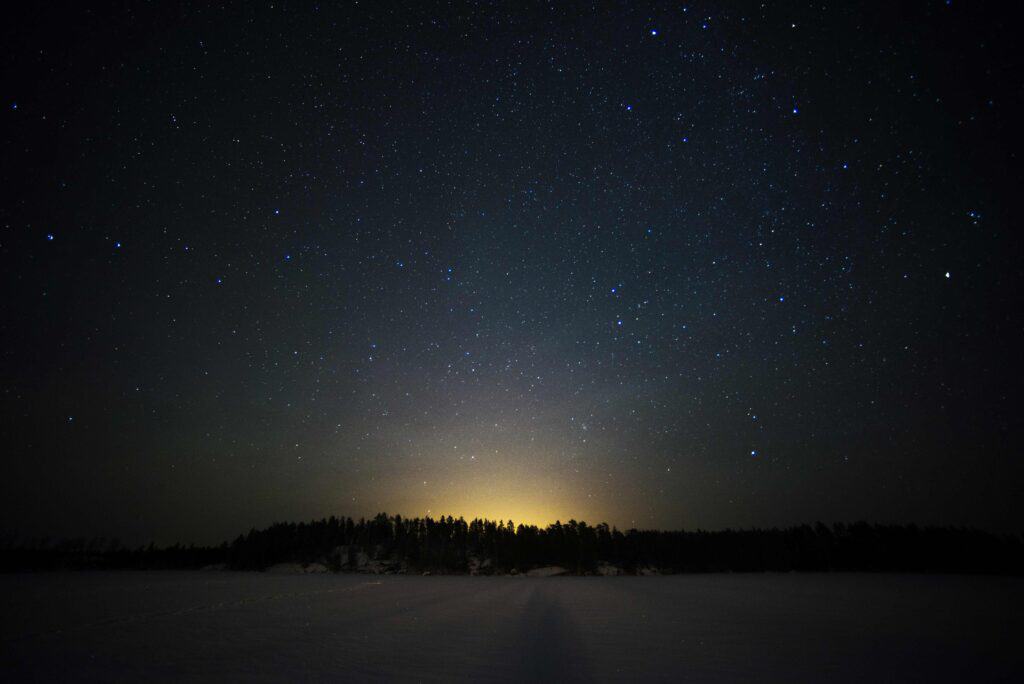
In cities and towns across the US, municipalities sometimes face competing goals when selecting, upgrading, and installing equipment for public schools, libraries, town halls, and other municipal properties. In the case of lighting exterior spaces, for example, there may be a concern that LED fixtures engineered to mitigate light pollution are less efficient and more costly than standard LED fixtures. This creates a potential dilemma for hundreds of these entities that have enacted light pollution laws or ordinances. How can they rein in light pollution in accordance with their regulations while also meeting local or state energy efficiency and decarbonization goals – all within the constraints of municipal budgets?
The DesignLights Consortium (DLC) recently commissioned a modeled case study to investigate these choices to inform lighting decision makers. It makes the case for utilities and energy efficiency programs to invest in additional incentives for pairing networked lighting controls (NLCs) with LED products on our LUNA Qualified Products List (QPL), which address both goals of mitigating light pollution and reducing energy usage. The study showed that, paired with careful design and controls programming, LUNA qualified products and controls can actually provide greater energy savings than LED projects focused only on energy efficiency.
Conducted with VH Lighting Services and Lighting Research Solutions, the DLC study compared the energy usage and cost impact of LED luminaires that meet the DLC’s technical requirements for light pollution mitigation (LUNA) with products geared toward efficiency alone.
We found that realized savings will clearly favor the use of LUNA products in some cases, while others will require additional incentives to justify their selection and installation by public lighting decision makers. This is especially the case if LUNA products are paired with NLCs, which proved advantageous in terms of both energy usage and light pollution reduction, but increased the payback periods, especially for small projects. It showed that incentivizing municipalities (and other commercial lighting customers) to choose LUNA products and outdoor NLCs would improve their ROI and can be a cost-effective strategy for utilities and energy efficiency programs looking to get the most savings from projects.
Moreover, by incentivizing LED products that meet LUNA technical requirements and additional incentives for NLCs, energy efficiency programs could help cities and towns check multiple sustainability boxes:
- Saving electricity (and money)
- Reducing both carbon emissions and light pollution that harms local wildlife
- Increasing the quality of life in some neighborhoods
- Preserving the night sky for stargazers and professional astronomers.
Titled, “Choosing Both Energy Efficiency and Light Pollution Mitigation for Commercial Outdoor Lighting”, the study investigated realistic outdoor lighting retrofit solutions using a model high school parking lot and a main street in Fort Collins, Colorado as examples. In both cases, researchers found the use of LUNA products reduced light pollution. And, while energy consumption findings varied for the main street application depending on product type, the use of LUNA products was an all-around win for the high school scenario – not only mitigating light pollution but also facilitating lower energy use and greater cost savings compared to retrofits focused on energy efficiency alone.
Attendees to the webinar asked the DLC to quantify the impact of controls post curfew on light pollution mitigation, and as a result, the DLC has updated the study to include this information. Dimming LED lighting results in commensurate reductions in sky glow; for example, LUNA retrofits that dim lighting by 80% after the business has closed will reduce sky glow by 80%. Sky glow reductions of up to 94% were calculated with a combination of LUNA products, dark sky best practices, and dimming post curfew to save energy and prevent wasted light at night.
The new study adds to a suite of resources the DLC provides to help local lighting decision makers wade through a profuse array of technical and community issues related to outdoor lighting and make the right choices for their communities. Other resources include basic information about the impacts of light pollution, instructions for writing a light pollution ordinance and guidance on using our LUNA QPL.
Besides meeting independently vetted light pollution mitigation criteria, the exterior lighting products on the LUNA QPL already meet all the DLC’s thresholds for efficacy, quality, controllability, and reliability. This makes them eligible for rebates from most North American energy efficiency programs. The QPL can be accessed for free by creating a MyDLC account and logging on to Search Products.

Light pollution has accelerated by about 10 percent annually over the past decade and now obscures the Milky Way from view for 80 percent of North Americans. We hope our new study will provide additional insight to help local decision makers meet their critical energy efficiency and decarbonization targets while also reducing the harm caused by misdirected, excessive, or improperly designed outdoor lighting.
Related Resources
Seven Strategies to Minimize Negative Impacts of Outdoor Light at Night
© 2025 DesignLights Consortium. The DesignLights Consortium is a project of Efficiency Forward, Inc., a non-profit 501(c)3 organization. Privacy Policy Terms of Use